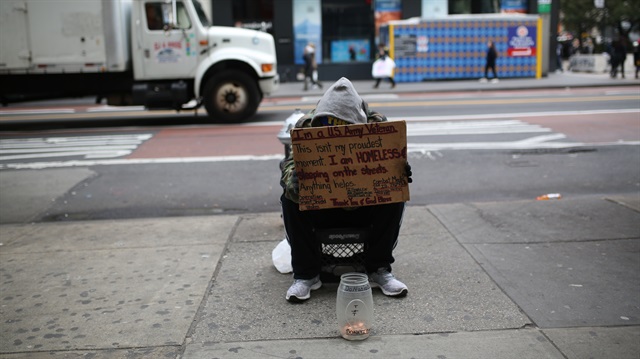
550,000 homeless people in US last year is higher than population of Agri, or nearly seven-fold of Tunceli
The number of homeless people in the U.S. is more than the population of 47 cities in Turkey, according to data compiled by Anadolu Agency on Saturday.
In the U.S., there were approximately 550,000 homeless people last year, according to the country's Department of Housing and Urban Development.
While this number is higher than the population of Turkey's eastern city of Agri in 2016, it is nearly seven-fold of eastern city of Tunceli's population, the Turkish Statistical Institute data shows.
Out of the 550,000 homeless in the U.S., 355,000 were individuals -- more than the population of Kirklareli -- and 195,000 were families with children, which is more than the population of Igdir or Bartin.
Poverty and unemployment are the major reasons for homelessness in the country with the world's biggest economy, according to the Salvation Army. Lack of affordable housing, poor physical or mental health, drug and alcohol abuse, gambling, family and relationship breakdown, as well as domestic violence are other reasons.
On the streets of New York, the U.S.' financial capital and biggest city, one can look at the signs people carry as a window to their lives, "Lost my job and home", "Homeless with kids and pregnant" and "U.S. veteran. Fought for my country. Where is the government?"
Around 11 percent, or more than 60,000, of the homeless are veterans, while 8.8 percent of those are between the ages of 18-30, according to the National Coalition of Homeless Veterans (NCHV).
While 1.4 million other veterans face the risk of homelessness, around 12,700 veterans who fought in Iraq from 2003 onwards became homeless in 2010, NCHV said.
New York and New Jersey metropolitan areas had the highest number of homeless people in the U.S. last year with 86,000. While Los Angeles came in second with 51,000, Seattle had 13,400 homeless people in 2016. Houston, Dallas and San Antonio in the state of Texas had a total of 14,000 homeless people last year, and Miami had 8,000.


